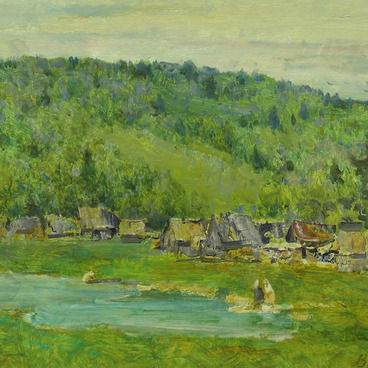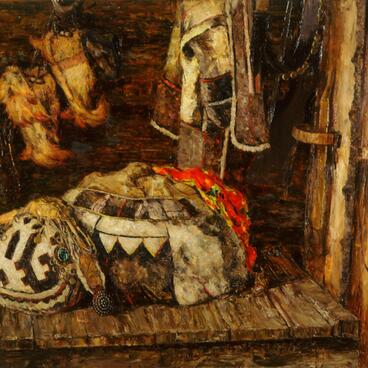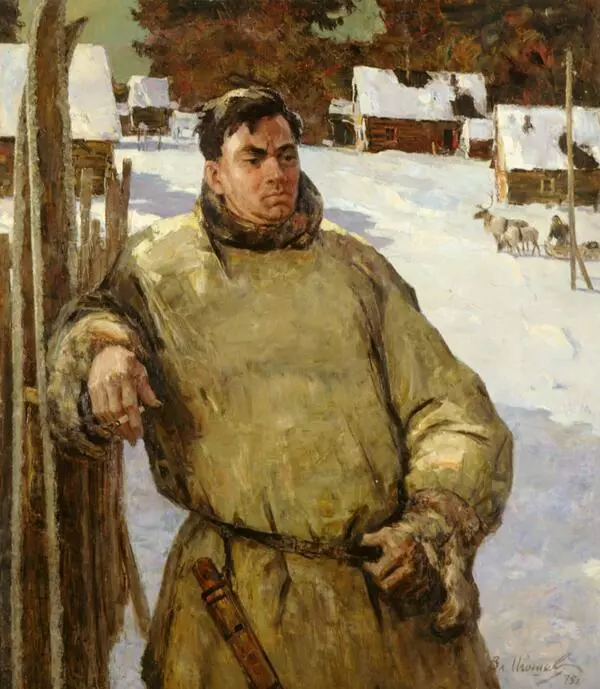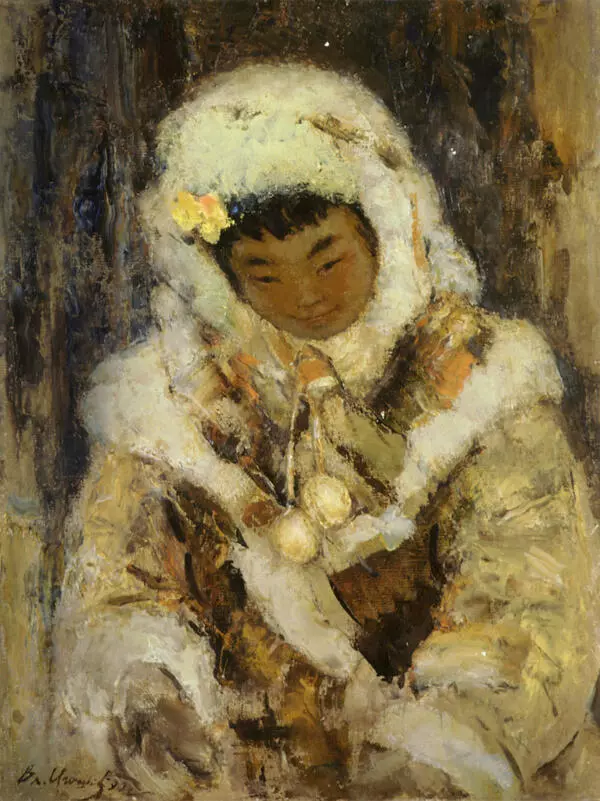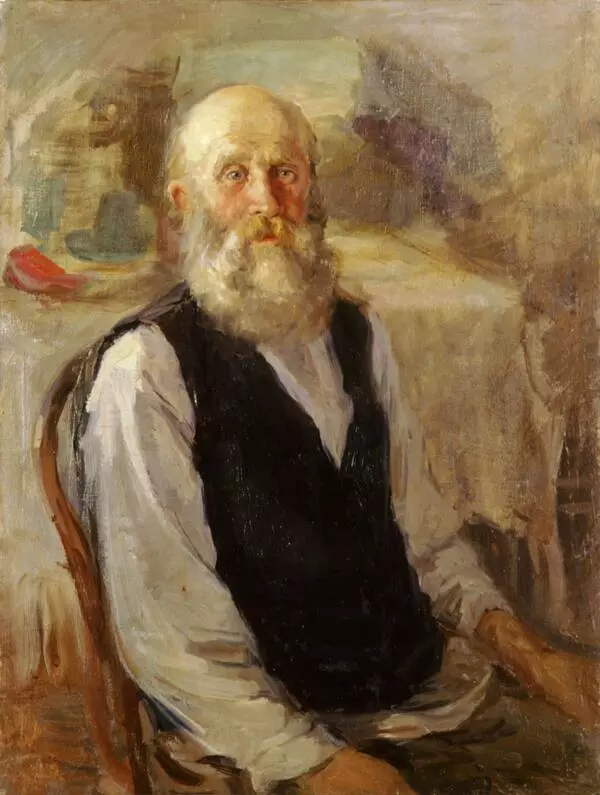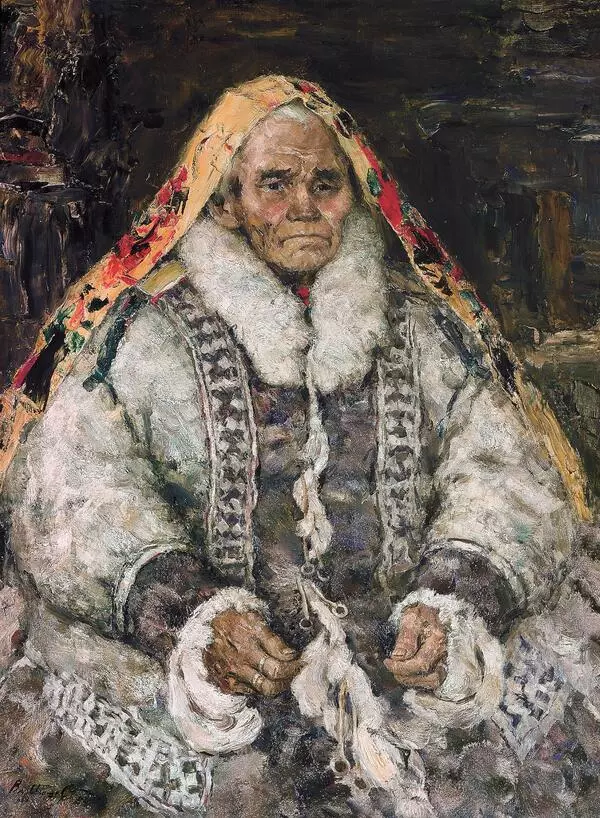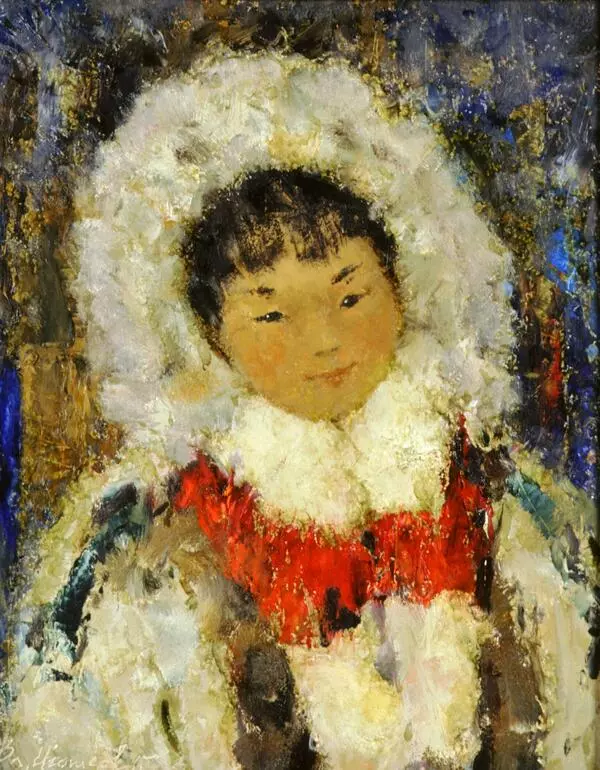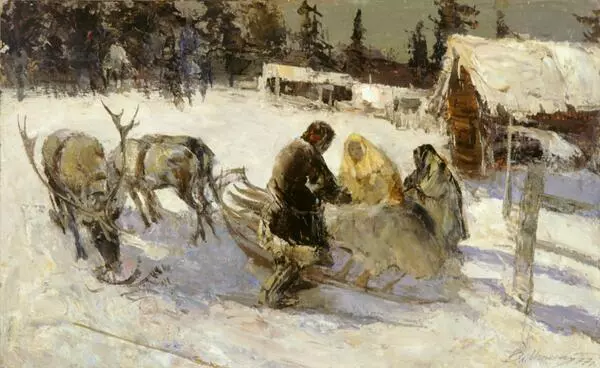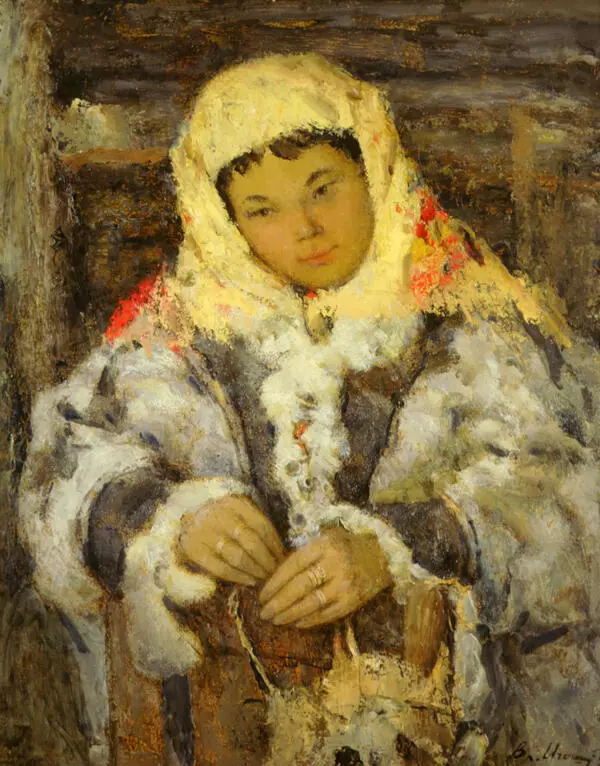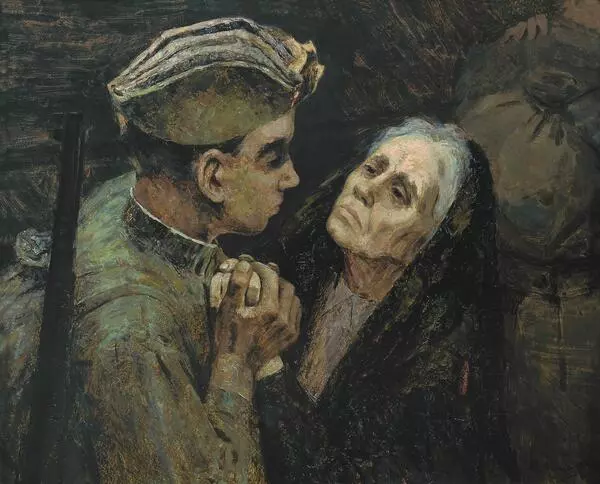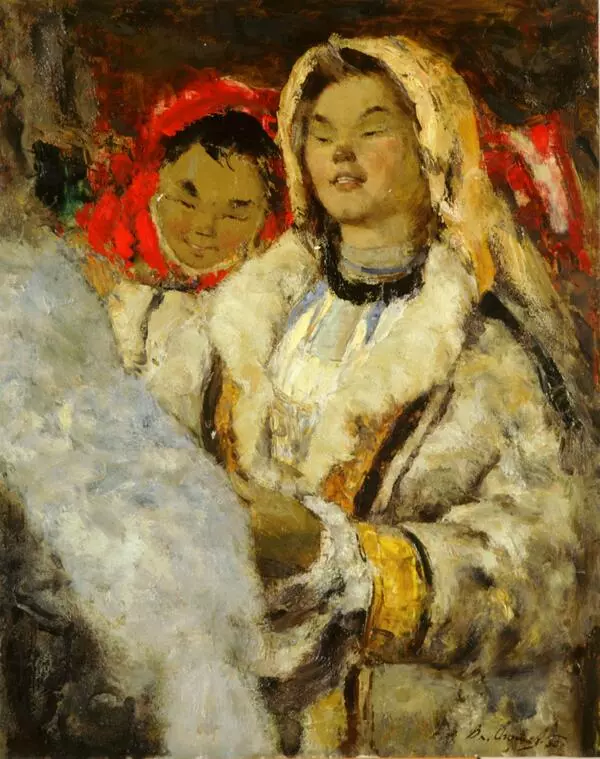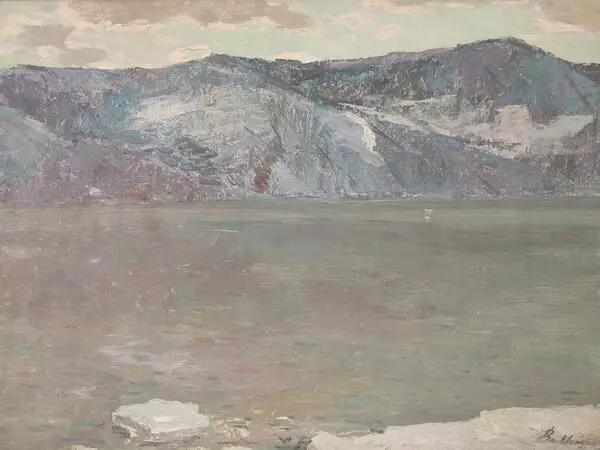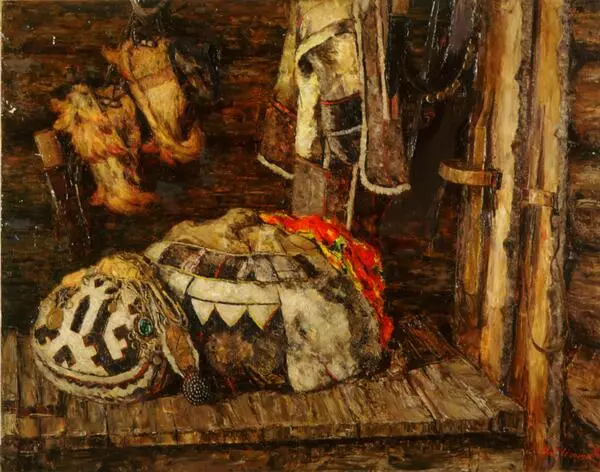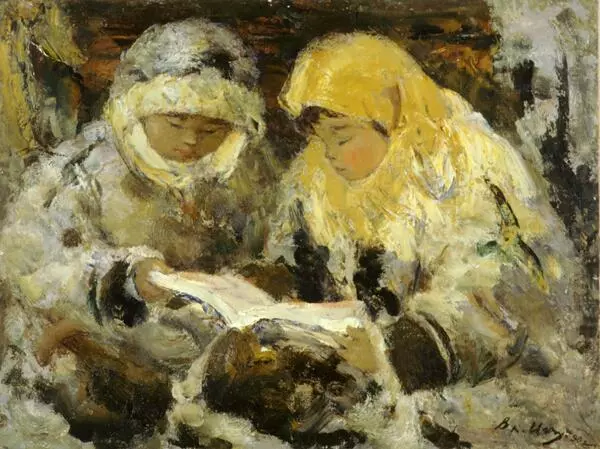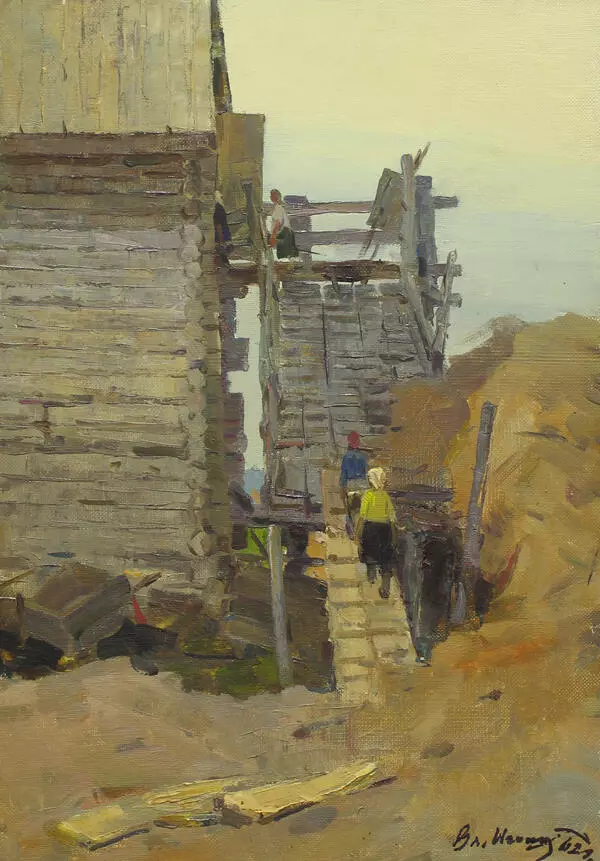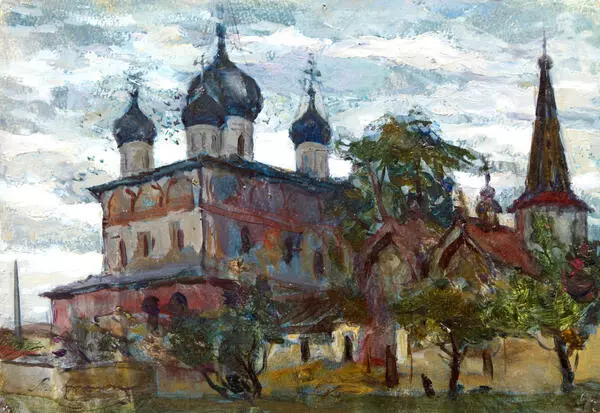Vladimir Igoshev was born in 1921 in a village close to Askino in the north of Bashkiria. In 1940 he graduated from the Ufa College of Arts.
During the Great Patriotic War from 1941 till 1943 Vladimir Igoshev served in the army. He was seriously wounded at Stalingrad and spent much time in the hospital. Having returned to Ufa, in spite of his health condition, he continued to work on paintings. In 1950 he graduated from The Surikov Art Institute in Moscow.
The People’s Artist of the USSR Vladimir Igoshev often depicted children in his paintings. In his memoirs he wrote: “What”s been said is even more related to the world of happy childhood, which always brings me joy. It is filled with such spiritual purity and naïve charm, so it can only fascinate me. I always passionately wanted to delve into the subtle child psychology, unspotted by conventionality of adulthood, to look at the surroundings with the wide eyes of the boys and girls, to learn the sincere art of astonishment from them.”
He carefully painted not just the children, but also the details of their clothes and everyday objects. Except for their basic function, the children’s clothes also had another, but not less important one. It protected the kids from evil spirits and evil eye. The Northern Khanty and Mansi paid much attention to the headwear, even though the men didn’t cover their heads quite often during winter. The flat round fur hats were popular in the southern part of the Ob-Ugric area. The headwear of the Northern Mansi looked different. It looked like bonnets with long earflaps made of deer fur. The Eastern Mansi men wore headwear made of otter, musquash, fur taken from the sable paws or a head of a bear. They were decorated with stripes made of bright cloth or fur trimming. In summer headwear functioned as protection against insects.
During the Great Patriotic War from 1941 till 1943 Vladimir Igoshev served in the army. He was seriously wounded at Stalingrad and spent much time in the hospital. Having returned to Ufa, in spite of his health condition, he continued to work on paintings. In 1950 he graduated from The Surikov Art Institute in Moscow.
In 4 years Igoshev went to the northern regions of the country and visited Khanty-Mansi region for the first time. Here he explored the local traditions, worked on the landscapes and genre paintings, painted the portraits of reindeer-breeders, fishermen and members of their families.
The People’s Artist of the USSR Vladimir Igoshev often depicted children in his paintings. In his memoirs he wrote: “What”s been said is even more related to the world of happy childhood, which always brings me joy. It is filled with such spiritual purity and naïve charm, so it can only fascinate me. I always passionately wanted to delve into the subtle child psychology, unspotted by conventionality of adulthood, to look at the surroundings with the wide eyes of the boys and girls, to learn the sincere art of astonishment from them.”
He carefully painted not just the children, but also the details of their clothes and everyday objects. Except for their basic function, the children’s clothes also had another, but not less important one. It protected the kids from evil spirits and evil eye. The Northern Khanty and Mansi paid much attention to the headwear, even though the men didn’t cover their heads quite often during winter. The flat round fur hats were popular in the southern part of the Ob-Ugric area. The headwear of the Northern Mansi looked different. It looked like bonnets with long earflaps made of deer fur. The Eastern Mansi men wore headwear made of otter, musquash, fur taken from the sable paws or a head of a bear. They were decorated with stripes made of bright cloth or fur trimming. In summer headwear functioned as protection against insects.


